 Up
Up
|
|

|

|
The Watkins exposure meter |
|
|
|
|
|
|
This remarkable device would be a good fit for a site covering photography history; it sits in my history of computing collection because, in addition to measuring light, it calculates how to best capture it on film. |
|
|
|
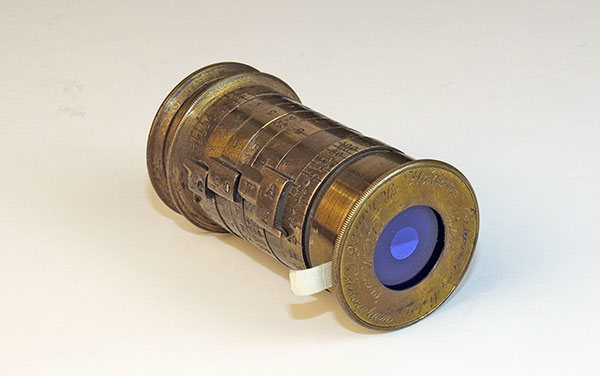 Click photo to enlarge |
|
|
|
The Watkins Standard exposure meter
(“Standard” is the model name) was invented in 1890 by Alfred
Watkins. It is what was called an actinometer: it measures the light
intensity at the subject to be photographed by exposing a strip of
light-sensitive paper to the incident light. The time required for
the paper to darken to a predefined tint (shade of gray) would
depend on the light intensity, and this time could then be used to
calculate the required photographic exposure time. The predefined tint is present on a piece of paper located next to the light-sensitive strip, so the user can stop the timing once the two papers look identical. The photo below shows the components of the device. The top row has the brass body and caps, and below them are the blue glass window, the cardboard disc with the gray tint semicircle next to a semicircular opening below which the strip of sensitive paper is threaded, held up by the dark blue felt-lined plate. |
|
|
|
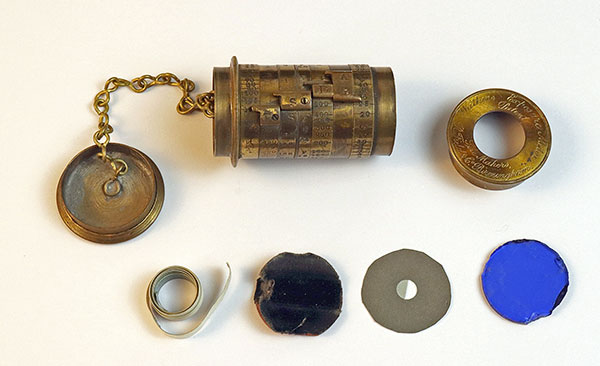 Click photo to enlarge |
|
|
|
The device is 6.8 cm long and is made of
brass. The hollow body is a thin-walled cylinder 3.1 cm in diameter,
divided into two compartments. The cylinder serves three purposes:
|
|
|
|
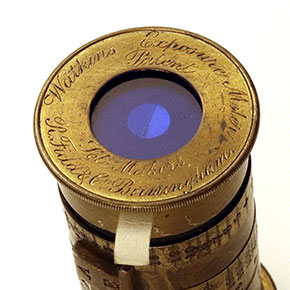
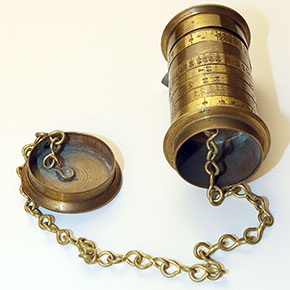 Click a photo to enlarge |
|
|
|
Once you’ve measured the time, you’re ready to use the
built-in calculator. This consists of a sequence of adjacent movable
rings, each having a pointer that can be set to a number on the
scale around the preceding ring. Basically what we have here is
analogous to a slide rule with three annular slides, one cursor, and
six scales. The number and order of these scales varied between
models; mine has the following scales (left to right, when the glass
window is at the right):
The values on scales P, S, and D are set, one by one, by rotating the pointers affixed to the next ring to their right. A double-sided cursor on a scale-less rotating ring is then set to point to a value on scale A to its left, and the result E is read under its other pointer on scale E to its right. |
|
|
|
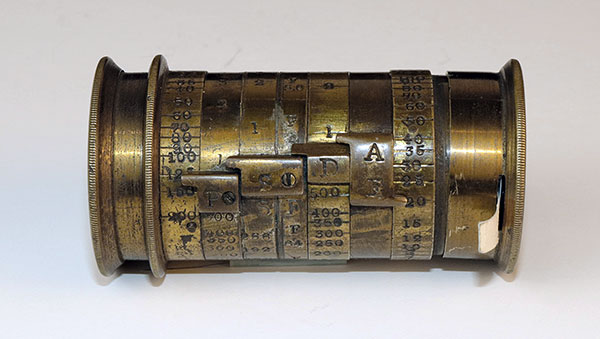 Click photo to enlarge |
|
|
|
Watkins’ actinometer was well received; with
electronic light metering still in the future, it was probably as
good a solution as you could get. The instructions book quotes a
review in “The Photographer”, which says: “The instrument, when
first seen and handled, seems complex; but with a few instructions
it is marvellous how easy the use of it becomes.”
Alfred
Watkins (27 January 1855 – 15 April 1935), the inventor of this
ingenious light meter, was an English businessman, photographer, and
amateur archaeologist. He invented the Standard meter shown here in
1890 and had it manufactured by R. Field & Co. in Birmingham until
1900, when the Watkins Meter Co. took over. Over the years a number
of models were introduced, and the device was sold through the
mid-1920s, although in 1902 it began to be replaced by the Watkins
Bee meter, a more compact actinometer in the convenient form factor
of a pocket watch. |
|
|
|
Exhibit provenance: eBay. More info:
|
|
|
|
|
|
|
|
Home | HOC | Fractals | Miscellany | About | Contact Copyright © 2024 N. Zeldes. All rights reserved. |
|